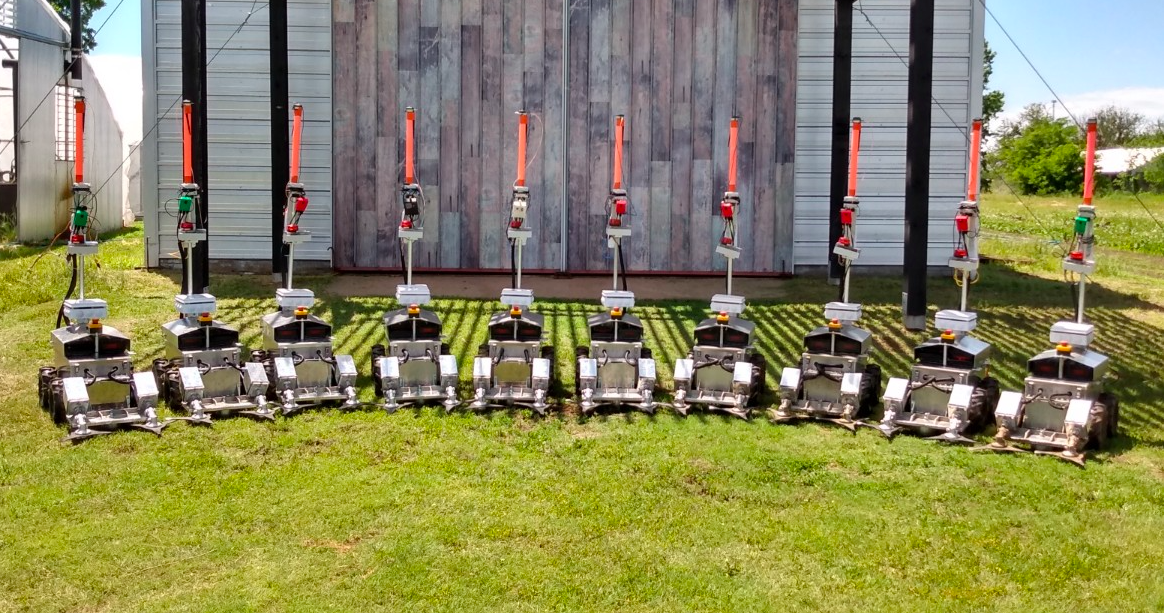Clint Brauer’s farm outside of Cheney, Kansas, could be described as Old MacDonald’s Farm plus robots. Along with 5,500 square feet of vegetable-growing greenhouses, classes teaching local families to grow their food, a herd of 105 sheep, and Warren G—a banana-eating llama named after the rapper—is a fleet of ten, 140-pound, battery-operated robots.
Brauer, the co-founder of Greenfield Robotics, grew up a farm kid. He left for the big city tech and digital world, but eventually made his way back to the family farm. Now, it’s the R&D headquarters for the Greenfield Robotics team, plus a working farm.
When Brauer returned to his agricultural roots, he did so with a purpose: to prove that food could be grown without harmful chemicals and by embracing soil- and planet-friendly practices. He did just that, becoming one of the premier farmers growing vegetables in Kansas without pesticides, selling to local markets, grocery store chains, and chefs.
But it wasn’t enough to make the difference Brauer was hoping for. Sure, he was growing a lot of environmentally friendly, pesticide-free vegetables. But a few acres in chemical-free vegetable production was nothing compared to miles and miles of broadacre, arable farmland that make up the majority of America’s agricultural lands.
Brauer was especially intrigued by no-till solutions for soil health. No-till is exactly what it sounds like: farming without using techniques like plowing and cultivation, which “disturb” the soil to kill weeds. Many U.S. farmers, especially those in America’s heartland of corn, soy, and wheat production, have already switched to or are looking to embrace no-till practices. Over 104 million acres were farmed no-till in 2017, an increase of 8% since 2012. Just over 900 million acres, including no-till land, were farmed in the United States in 2017, according to the 2017 Census of Agriculture.
But parking machinery to improve soil health often comes with a trade that didn’t sit well with Brauer: dependence on chemical weed control. No-till works to improve soil health, but the trade-off in chemical use is not much better for the environment than conventional farming. Regardless of the type of farming, the problem is the same.
“You got to start with weeds. It’s the number one thing that farmers are fighting,” Brauer says.
That’s where the robots come in.
#tech #robotics #science #agriculture #environment #data science
